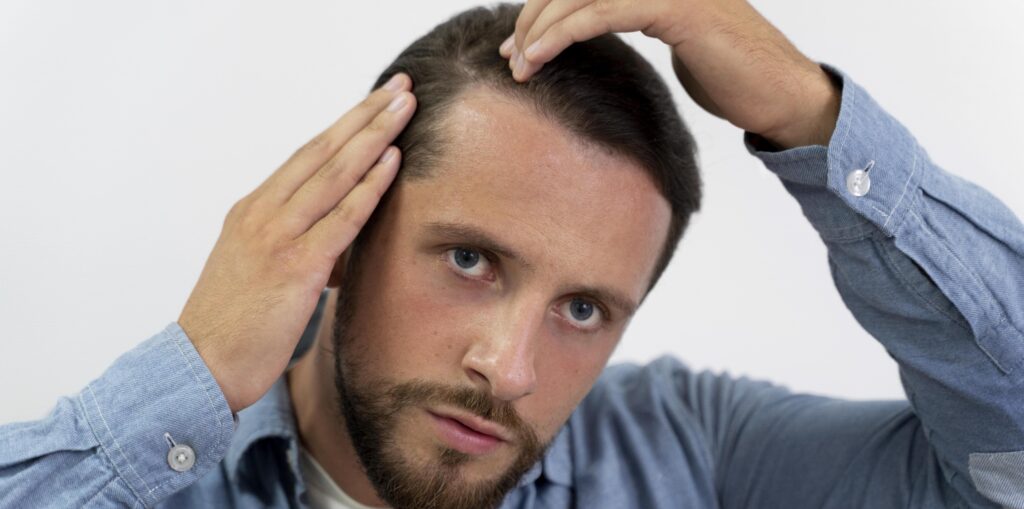
2025 Updated Information: This article has been updated to show you the most up to date and relevant information in 2025. With so many advancements being made in treatments that are popular for medical tourists, it’s important to get the newest details!
One of the most frequently asked questions by those considering getting a hair transplant is: Do hair transplants work? Hair transplants have become a very popular treatment for baldness over the last few decades with an estimated 1 million people travelling to Turkey alone in 2022 for this treatment. With the cost of hair transplants becoming more affordable due to widespread availability, many men and women who experience baldness are opting for this treatment. In this article, we’ll be looking at if hair transplants work, how they work and what is involved in the process. Keep reading below to find out more.
Table of Contents
Do Hair Transplants Work
Before answering the question on whether hair transplants work or not, it’s important to understand what a hair transplant is. A hair transplant is a procedure involving moving healthy hair follicles from one part of your body, most frequently from other parts of the scalp, to the balding area on your body, most frequently the top of your head. This is done by removing grafts of skin from the area containing the healthy hair follicles and planting them into the balding area, so you are able to grow hair once again.
The entire process involves using hair from different parts of your scalp or even body. This is important as, if you were to take hair follicles from an external source, such as another person, the process wouldn’t work. Your immune system would reject the hair follicles and not be able to grow any hair due to each persons unique genetic make up. Additionally, this would be an infection risk and not something you would want to deal with.
As a result, it is pretty safe to say that yes, hair transplants do work. Of course, there are some cases where it won’t. No treatment has a 100% success rate but there are precautions you can take to ensure the highest chance possible of success. This will be covered in more detail below *LINK TO SECTION BELOW* but choosing a reputable clinic ensures a 90%+ chance of success.
The Hair Transplant Procedure
The hair transplant procedure in general is considered less intrusive than other aesthetic treatments. This is because a hair transplant only requires local anesthesia and can be complete in less than 1 day. While the surgical part of the procedure only takes between 4-10 hours depending on the hair transplant method you choose and how many grafts you need, some small preparation is required ahead of time and healing can takes a few weeks/months. You can read our in depth articles on the hair transplant procedure as well as the entire recovery process which details the timelines, medicine and expectations for various stages – this will also be briefly covered below as well.
In the weeks leading up to your hair transplant, your doctor will request you to stop taking any medication you may be on and not smoke or drink alcohol. The reason for this is due to these things can lead to your blood thinning which makes the hair transplant surgery more difficult. The procedure itself will last between 4-10 hours based on the number of grafts required, the type of hair transplant you’re getting and the clinic/clinician doing the procedure. Aftercare in the first few weeks requires using special shampoos, changing bandages and sleeping in certain positions. Results can start being seen 6-9 months after surgery.
How Long Do Hair Transplants Last
Hair transplants are generally considered to be permanent. The transplanted hair follicles are taken from the back and sides of your head which are resistant to the hormones that cause hair loss. When these follicles are transplanted to the balding areas, they retain their resistance and continue to grow hair for a lifetime.
However, it’s important to note a few things:
- Some transplanted hairs may fall out initially. This is normal and part of the hair growth cycle. The follicles themselves remain and will produce new hair.
- The success of the transplant depends on several factors, including the skill of the surgeon, the quality of the donor hair, and how well you follow post-operative care instructions.
- While the transplanted hair is permanent, it’s not immune to the effects of aging. The hair may become thinner and finer over time, just like the rest of your hair.
How to Ensure Your Hair Transplants Longevity
To ensure the longevity of your hair transplant:
- Choose a qualified and experienced surgeon.
- Follow the post-operative care instructions carefully.
- Maintain a healthy lifestyle.
- Establish a good hair care routine.
All of the above listed points will be crucial to maintain healthy hair in the years after your transplant. One of the common pitfalls patients of this procedure make, especially when travelling abroad as a medical tourist is taking the cheapest option available. While cost is of course a very important factor and likely the reason you may be considering to travel in the first place, choosing the cheapest option may lead to unintended bills in the future, should anything go wrong with the procedure. The last thing anyone wants is to have to go through the time and effort required to fix any complications that can arise from not choosing a reputable clinic/doctor.
Things To Consider Before Getting A Hair Transplant
If you’re considering a hair transplant, it’s crucial to have realistic expectations and discuss your individual case with a qualified hair restoration specialist. They can assess your hair loss pattern, donor hair availability, and overall health to determine if a hair transplant is the right option for you. Some of the key things to consider include:
- Are you a good candidate?
- This will be determined based on the type of hair loss you have, your availability of donor hair (where the hair follicles will be taken from), and your overall health.
- Choosing the right clinic and surgeon
- Make sure to look at the experience and qualifications, reputation, reviews and how you feel during your initial consultation.
- Which type of hair transplant you want
- FUE, FUT, Sapphire, Direct Hair Implant are all different ways of doing hair transplants with various pros and cons. These pros and cons are across cost, length of time for surgery and ease of healing.
- Your lifestyle factors
- Smoking, drinking alcohol, and medications you may be on can all impact your hair transplant in the long term.
- Long-term commitment
- You may be required to commit to ongoing treatment or maintenance of your hair transplant. This consistency can at times make it not worth it for certain people.
If you need any help with making the decision, feel free to contact us. We are not associated with any clinics and are here to provide you unbiased information for free. If you are interested in learning more about hair transplants, check out our blog page.
Conclusion
Yes, Hair Transplants do work. While you may see some horror stories on the internet, this is most definitely an exception to the case rather than the norm. There are of course things you can do to ensure your hair transplants success over a long period of time such as picking a reputable surgeon, maintaining a healthy lifestyle and establishing a good hair care routine. Make sure to carry out thorough research before making a decision and consult with several doctors to find the best solution for you.
If you still have any questions or are unsure of the procedure, feel free to contact us for unbiased information. We are not associated with any clinics and are here to simplify the information gathering process around hair transplants. We hope you’ve enjoyed this article and feel free to leave a comment below. If you are interested in learning more about hair transplants, check out our blog page.
Frequently Asked Questions (FAQ's)
- Does the donor area grow back?
- This is a common concern. The answer is a bit nuanced. Technically, the extracted hair follicles don’t grow back in the exact same spot. However, with modern FUE techniques, where individual follicles are removed, the surrounding hair often covers the small extraction sites, making any thinning less noticeable.
- Can people tell you had a hair transplant?
- With advancements in hair transplant techniques, the results can be very natural-looking, especially when performed by a skilled surgeon. The final result blends seamlessly with your existing hair. A good surgeon will consider your hair characteristics and create a natural hairline
- What exactly is a hair transplant?
- It’s a procedure where healthy hair follicles are taken from one part of your body (usually the back or sides of your head) and transplanted to the balding areas.
- How does a hair transplant work?
- Hair follicles from the donor area are resistant to hair loss. When transplanted, they retain this resistance and continue to grow hair in the new location.
- Does it hurt?
- Local anesthesia is used during the procedure, so you shouldn’t feel any pain. There might be some discomfort during the healing process, but this is usually manageable with pain medication.
- How long does a hair transplant take?
- The surgery itself can take anywhere from 4 to 10 hours, depending on the technique used and the number of grafts needed.
- How long is the recovery time?
- You’ll need a few weeks for initial healing. It takes several months to see noticeable results, and up to a year for the full effects to become visible.
- How long do hair transplants last?
- The transplanted hair is considered permanent. However, your natural hair can continue to thin over time, and the transplanted hair may also thin with age.
- Will my hair look natural after a transplant?
- With a skilled surgeon and proper care, the results can look very natural.
- What are the chances of a hair transplant being successful?
- Choosing a reputable clinic and following post-operative instructions can significantly increase your chances of success, often to 90% or higher.
